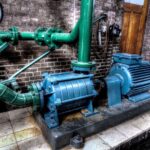Bridging Finance is a short-term solution that helps you in many different ways. It offers several benefits, including flexibility and quick access to funds. You can use it for almost any legal purpose, and mostly used to complete the purchase of a property. However, there is another great benefit that it can save your home. Now you may wonder how bridging finance can save your home. You will find all the details about it in this article.
Home repossession is a risk when you fail to repay your mortgage on time. It can happen due to several reasons, such as the loss of a job or any unexpected financial challenge. Therefore, it is essential for you to understand the reasons that lead to repossession and how you can avoid it in the best possible way.
Let’s take a deeper dive to know what repossession is and how bridging debt can help you to avoid repossession.
Table of Contents
What Is Repossession?
If you have missed payments with your leasing company, mortgage loan or defaulted on a secured loan in which you have used your house as collateral, your lender has a legal right to sell your property and get the money back. This is known as repossession, and it is the last resort a lender has to get the loan amount back.
Lenders give you a chance to reschedule repayments so that you can pay them off easily. However, if you are in arrears for 90 to 180 days, your lender has the right to take legal action.
Using Bridging Finance to Avoid Repossession
A Bridging loan is a short-term loan; you can borrow an amount for a few months to three years. Then, when you take out bridging FinanceFinance to stop repossession, you can use this amount to pay off your mortgage and retain the ownership of the house for the duration of bridging debt. This way, you can get additional time to manage your situation.
All types of bridging debts are secured, which means you need to use a property or valuable asset as a security against the loan. Usually, there are two main types of bridging loans to choose from:
Open Bridging Loan
It is a type of secured loan with no fixed end date or an exit strategy for the future. We can say that it offers more flexibility due to open-ended repayment terms. It is more suitable for individuals looking for urgent funds without the worry of quick repayment.
However, this loan carries more risks for the lenders, so the interest rate is high to compensate for the risk. Nevertheless, open bridging loan can be a perfect solution to settle a mortgage and avoid repossession if the lender is willing to accept repayments based on home equity.
Closed Bridging Loan
This type of secured loan has a fixed end date for loan repayment. It means that to take out such a loan, you must have a detailed exit strategy and a credible payment plan. It carries less risk for the lenders and has lower interest rates than open bridging loans.
You can take out any of the two types and use them to stop repossession and repay mortgage loans.
For more interesting Blogs, Please Visit my5.tv
Bridging Loans Vs Selling An asset To Stop Repossession
Bridging can be beneficial if you are facing the issue of repossession because you do not need to liquidate an asset to pay off your home loan.
Liquidating assets may theoretically seem the perfect solution for numerous financial challenges, but the delicacies of doing so do not make it practical. Sometimes your wealth is invested in your business that you do not want to sell, and sometimes your assets are illiquid. There is always a factor of cost too. Selling an asset or security before it gets mature is more likely to impact your returns and put you at a disadvantage.
Lastly, it will take a long time to sell your asset, which makes it an impractical thing to stop repossession. If you have a risk of repossessions, you will need quick funding to overcome this problem. Again, bridging finance advisors and brokers can give you ideal solutions to access cash quickly. Typically it is possible to get cash within a period of one or two weeks.
How To Get A Bridging Loan To Stop Repossession?
To get a bridging loan, you have to go to an FCA-regulated broker, direct lender or a peer-to-peer lending platform. Most bridging lenders do not deal with the public directly, so you need to take out a loan through a broker in most cases. In addition, you should have enough spare equity left in the property you will use as collateral. You will also need a detailed exit strategy to describe how you will repay the loan. In the case of the property that is under the threat of repossession, it normally requires you to sell the property to repay the loan.
Should You Use Bridging Finance To Save Your Home?
Taking out a bridging loan to stop the repossession of your property is only a temporary solution, as you have to repay the bridging debt within a short period. Moreover, it tends to be more expensive as compared to mortgages and other property loans. It means additional interest rates and fees will be added to your plans, and you may not be able to get out of this debt cycle.
Generally, a bridging loan is a suitable option when you are thinking of selling your property as soon as possible to clear all the debts. Getting bridging finance will help you retain possession of your home and more time to sell your home at the best price. On the other hand, if your home is repossessed, your mortgage lender will try to sell it quickly, which means at a lower price than its market value. Therefore, taking out a bridging loan is better than allowing your home to be repossessed.
We hope that now you know how bridging loans are beneficial to save your home from repossession.












